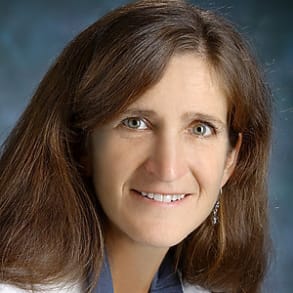Neurologist Argye Hillis recaps her 2022 ANA annual meeting presentation on recovery from aphasia after stroke. Treatment in the acute setting may include endovascular therapies, while a variety of mechanisms contribute to long term recovery, in particular the reorganization of structure function relationships in the brain.
I'm margie gillis and I'm a professor of neurology and deputy director of the department of neurology at johns Hopkins School of Medicine and I'm delighted and honored to have given the Soriano lecture as part of the no recovery and europe plasticity crosscutting special interest group symposium. This set of presentations highlighted how people recover functions in a variety of neurologic diseases including stroke, multiple sclerosis and intractable epilepsy requiring reception of the brain. My own presentation focused on recovery from aphasia or language impairment after stroke. The inability to speak or understand language is obviously devastating to all social interactions and vocations, but people who have severe aphasia after stroke often recover both language expression and comprehension through a variety of mechanisms acutely. Language can be restored by repre fusing areas of severe tissue ischemia through endovascular therapy or thrombosis beyond the acute period. Language recovers primarily through reorganization of structure, function relationships that is undamaged parts of the brain, assume the function of the damaged parts, resulting in a reorganized networks that underlie language functions such as word finding, reading and spelling. We can visualize these networks that support language, both in healthy people and in stroke survivors through a variety of functional imaging approaches functional M. R. I. And functional near infrared spectroscopy or F nears can show not only what parts of the brain are activated during language tasks. That is the nodes of the language network but also how well these nodes work together. We can quantify how well each of the nodes of the language network are working together with other nodes by um looking at functional connectivity, F. M. R. I. Or F nears people who have stroke involving one or more of the language network nodes show increased activation in parts of the left or the right hemisphere during language that we're not normally activated during language. These healthy brain areas are repurposed to support aspects of language that were previously supported by damaged areas. Furthermore, they become incorporated into the network with spared nodes of the language network. As indicated by increased connectivity or enhanced correlations between the activation patterns across areas. I also discussed how reorganization evidenced by changes in areas of activation or changes in connectivity between nodes of the language network or both can be enhanced by language therapy plus noninvasive brain stimulation such as transcranial direct current stimulation or T. D. C. S. T. D. C. S reduces the threshold of activation of neurons in the network engaged by the concurrent behavioral task. And I showed evidence from clinical trials that either an adult T. D. C. S. Two left hemisphere regions or uh T. D. C. S. To the right cerebellum can augment the effects of language therapy on increasing connectivity between language network nodes and their right hemisphere home logs in short illustrated how people can regain language after stroke through the brain's amazing ability to reorganize itself
Related Presenters
